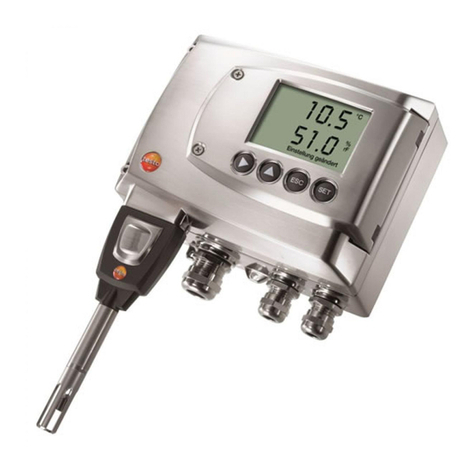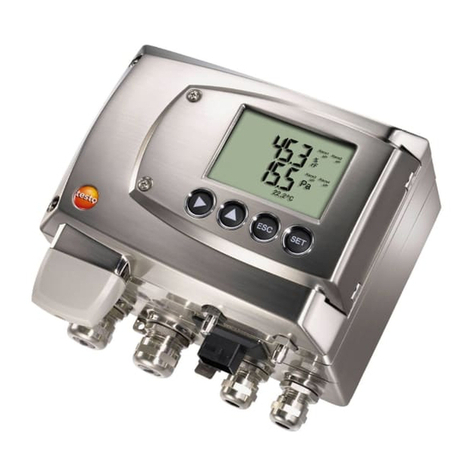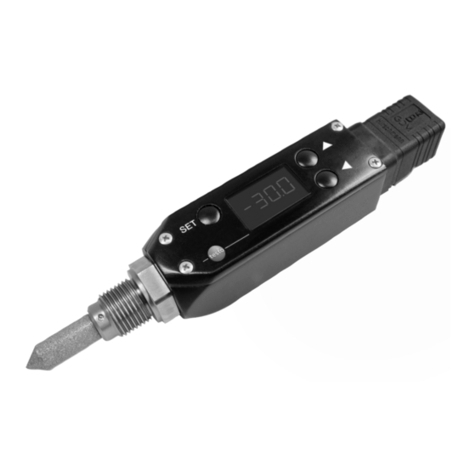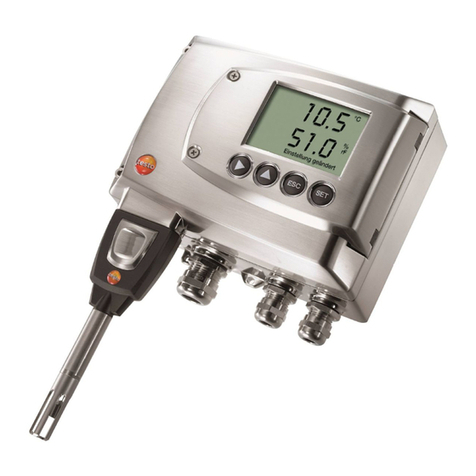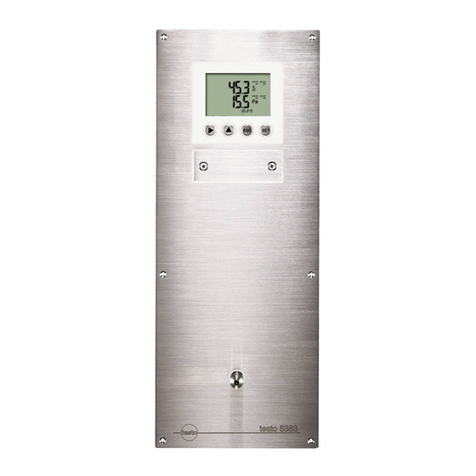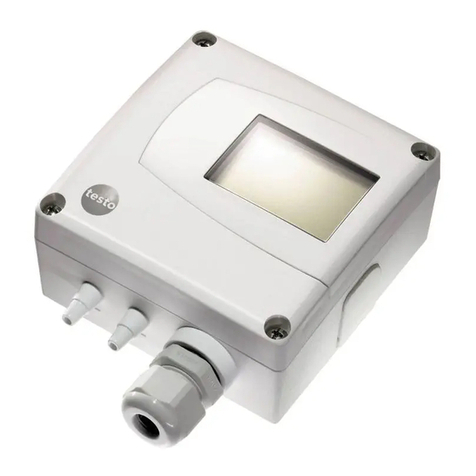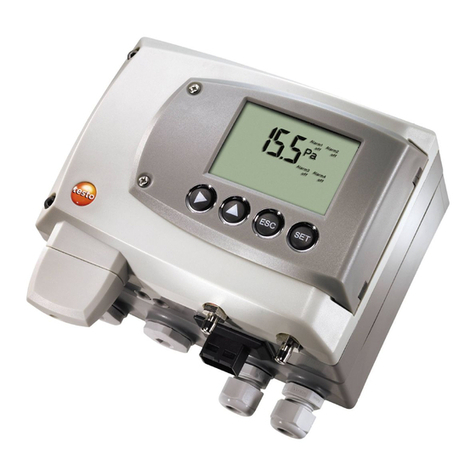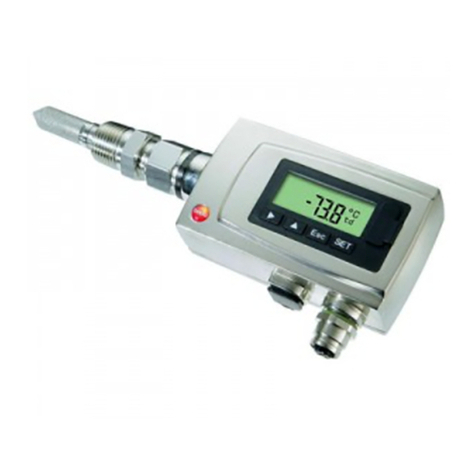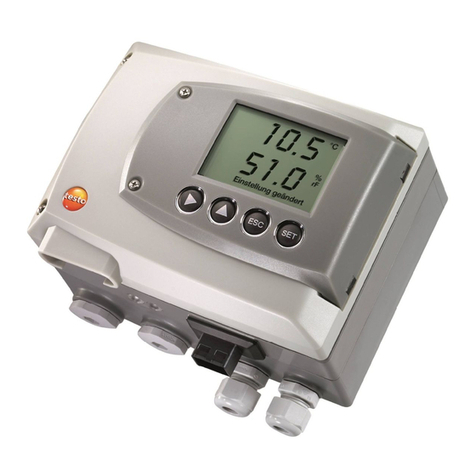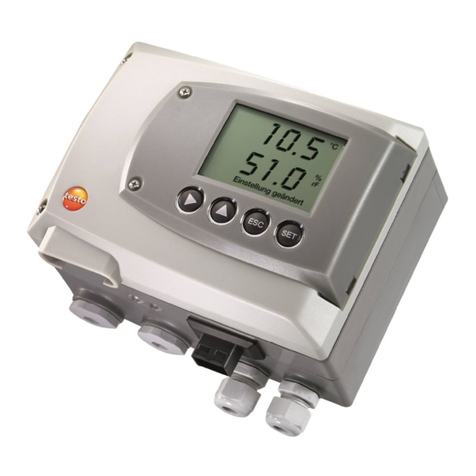
Contents 7
Contents
1TRANSMITTER............................................................................................9
1.1 Specifications...........................................................................................9
1.1.1 Functions and use.......................................................................9
1.1.2 Scope of delivery.........................................................................9
1.1.3 Accessories...............................................................................10
1.1.4 Technical data........................................................................... 10
1.1.5 Dimensions ...............................................................................11
1.1.6 EC declaration of conformity for testo 6682..............................12
1.2 Product description ................................................................................ 13
1.2.1 At a glance ................................................................................13
1.2.2 Usable probes ...........................................................................14
1.2.3 Display and keypad...................................................................14
1.2.4 Analog outputs ..........................................................................14
1.2.5 Parameters................................................................................15
1.2.6 Scaling ......................................................................................15
1.3 Commissioning ......................................................................................17
1.3.1 Wall mounting ...........................................................................17
1.3.2 Connecting the instrument ........................................................19
1.3.3 Adjusting the instrument............................................................25
1.4 Operation ...............................................................................................32
1.4.1 Key cover ..................................................................................32
1.4.2 Password protection..................................................................33
1.4.3 Structure of user menu..............................................................33
1.4.4 Overview of the testo 6682 user menu............................................35
1.4.5 The individual main menus .......................................................37
1.5 Status, warning and error messages..................................................... 48
1.5.1 Status messages....................................................................... 48
1.5.2 Transmitter warning messages.................................................49
1.5.3 Error messages.........................................................................50
1.6 Maintenance and cleaning.....................................................................51
1.6.1 Maintaining the instrument........................................................51
1.6.2 Cleaning the instrument ............................................................51






